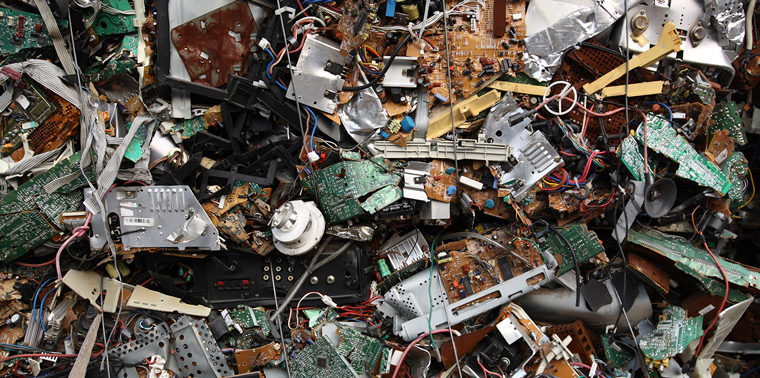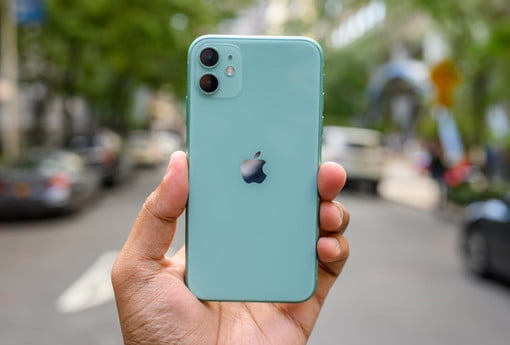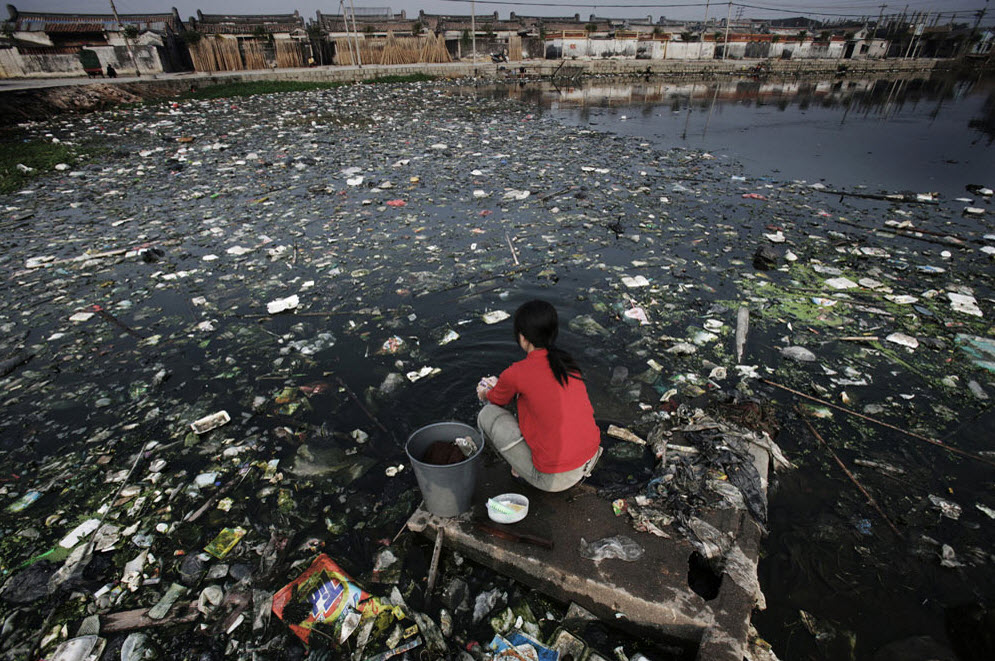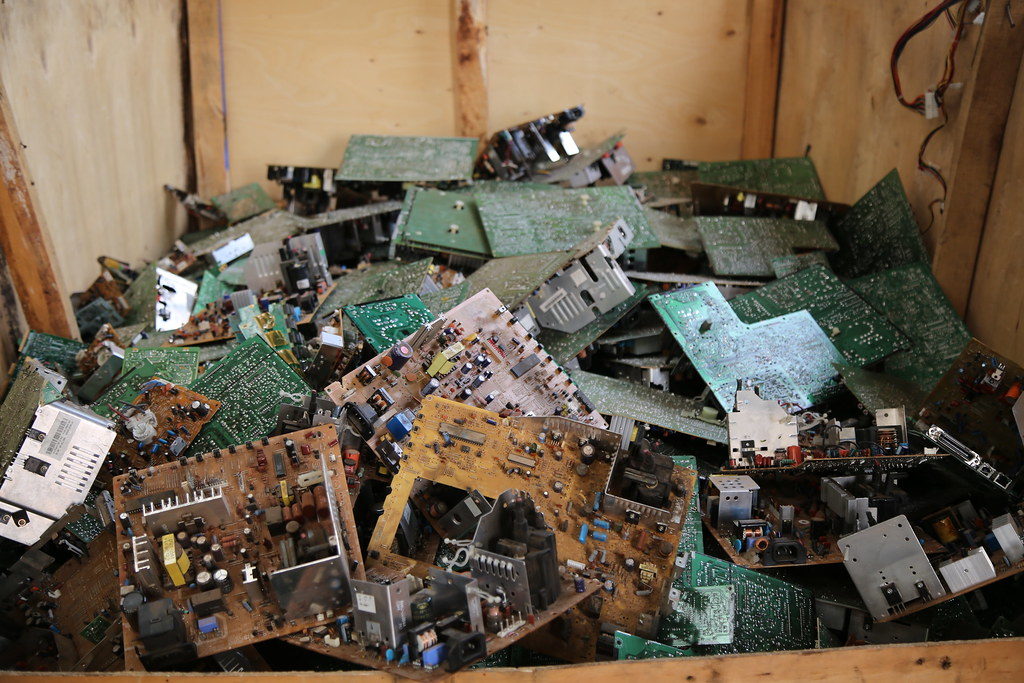
Thinking about getting a new phone? Read this first
When the iPhone 11 was released in September of this year, at $50 less than the iPhone XR and with more capabilities, Apple had asked suppliers to produce between 70 and 75 million units. According to some reports, however, the phone sold so well Apple asked suppliers for another 8 million units.
That means around 80 million people probably upgraded to the new iPhone 11 -- maybe because some of them really needed the upgrade because of issues with older models, or maybe just because they wanted the next big thing.
Regardless of why roughly 80 million people got a new iPhone, it’s likely that their old phones ended up being thrown away, either in the trash or to be recycled, contributing to the world’s growing electronic waste problem.

The United Nations reported in January that 50 million tons of electronic waste, or e-waste, is thrown away each year. In 2015, the UN reported that up to 90% of that is illegally traded or dumped.
Ultimately, iPhones make up a very small percentage of that waste -- of an estimated 7.8 billion people on the planet, 5 billion of them have a mobile device, and over half of those are smartphones. Besides phones, there are computers, radios, and televisions, and then electrical appliances like refrigerators, washing machines, microwaves, and more contributing to e-waste.
According to the online Encyclopedia Britannica, e-waste comprises over 5% of all municipal solid waste, and that number is increasing due to things like consumer demand and changes in technology.
“We’re making just mountains of this stuff every day,” said Jim Puckett, executive director and founder of the Basel Action Network.
The poisoning of Guiyu
The Basel Action Network, or BAN, is a watchdog organization that monitors international trade and waste. The organization first became involved in e-waste in 2001. At the time, Puckett explained, BAN discovered a town named Guiyu in the Guangdong province in China was receiving the majority of the U.S.’s e-waste. BAN visited the town, Puckett said, to document the dumping of toxic computer waste.
BAN became one of the first organizations to bring the problem of e-waste front and center for people in North America with their documentary, “Exporting Harm,” which exposed the dangerous “recycling” practices in Guiyu, which exposed laborers and their local resources to toxic substances as they burn what can no longer be used, polluting the air and water.
“It was actually a form of recycling,” Puckett said, “But don’t be fooled by the world because the ‘recycling’ was really very dangerous and primitive and really harmful to the workers in the local environment.”
Although Guiyu eventually stopped accepting imports, Puckett said, the damage remains -- the groundwater in the area is no longer drinkable, for example, and the entire region is still contaminated. People living in the area are still suffering from the effects as well.
One planet
According to the World Health Organization, these kinds of primitive “recycling” methods expose children and adults to hazardous substances, chemicals and toxic fumes. Children are especially at risk, WHO reports.
Make no mistake, although it’s easy to feel like e-waste is a problem for faraway places like China or a handful of countries in Africa, it is a global issue that everyone should be concerned with. One of the major concerns is with sensitive data stored on devices, but there’s an environmental issue as well.

“It’s one planet,” Puckett said. He added that scientists have proven that even when the burning of toxic chemicals takes place in China, the released air pollutants eventually make their way over to countries like the U.S. and Canada.
“You are getting exposed whether you like it or not,” he said.
An end to e-waste - accountability
One of the best ways to combat e-waste is to hold manufacturers accountable.
“Manufacturers need to think about end of life when they design products,” Puckett said. “They need to think about making things last longer, be more upgradable.”
Companies also have the option to avoid using toxic materials, Puckett said, although many choose not to due to the expense. However, consumers have a lot of power in this sphere by choosing to purchase products from companies that are taking steps to remove toxic materials.
A great tool for this is epeat.net, a website created by the Environmental Protection Agency that consumers can use to find sustainable electronics such as servers, computers and displays, imaging equipment, mobile phones, and TVs.
“The first step is to buy the right equipment and reward those companies that are making them better than others,” Puckett said.
Consumers can also use e-stewards.org, a resource created by BAN, to find responsible recyclers in their area.

Some companies are working to be more sustainable and transparent, like Best Buy. According to Best Buy’s 2019 Corporate Responsibility and Sustainability Report, they have operated the most comprehensive consumer electronics takeback program in the U.S. As of June 2019, the company collected 2 billion pounds of e-waste and appliances for recycling. Through its Geek Squad, Best Buy also works to extend the life of products through repair services. Or certified B Corp Nimble, that promises to make its technology from sustainable sources and be environmentally responsible.
We should all be working to reduce the amount of waste we use. It can be difficult, especially when it comes to technology, which most people today can’t live without. This article was written on a laptop, and you’re probably reading it on a mobile phone or your own computer. But e-waste isn’t just about mountains of trash, it’s about toxic chemicals entering our land and atmosphere, and sensitive data being stolen. We should all care about e-waste because it affects the planet and the people living on it.
So this holiday season, before you buy that new phone, ask yourself - do you really need it?
